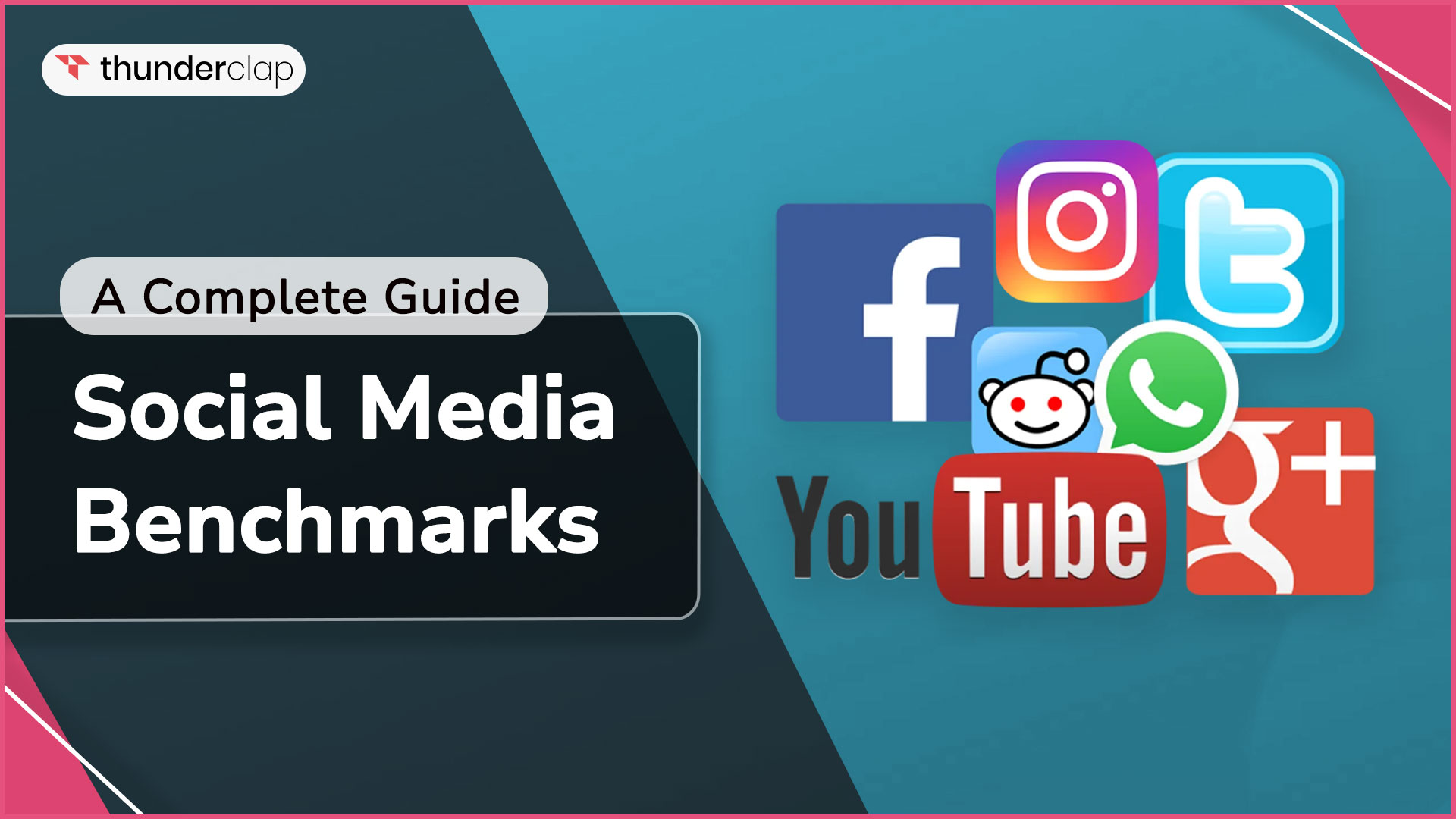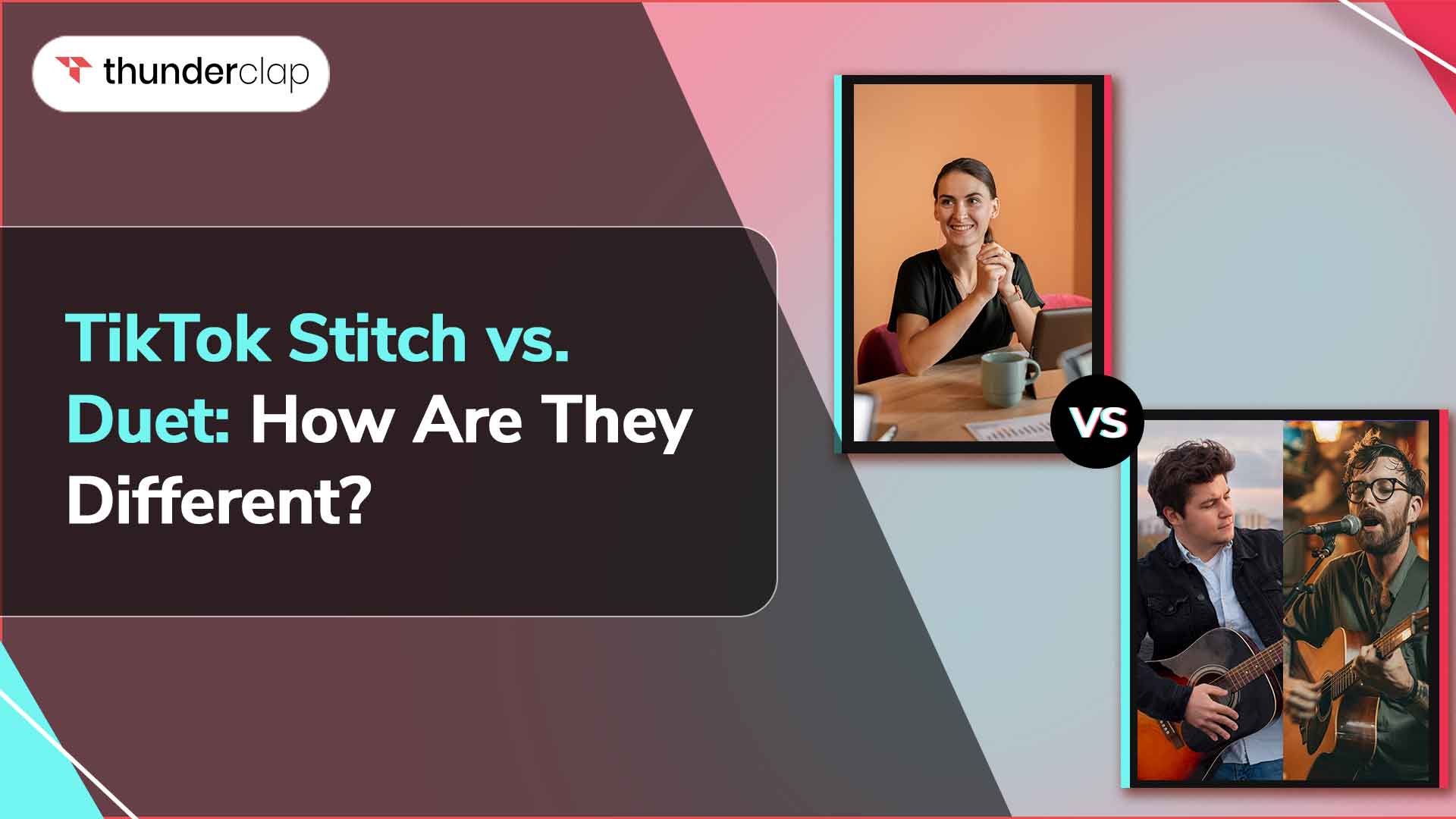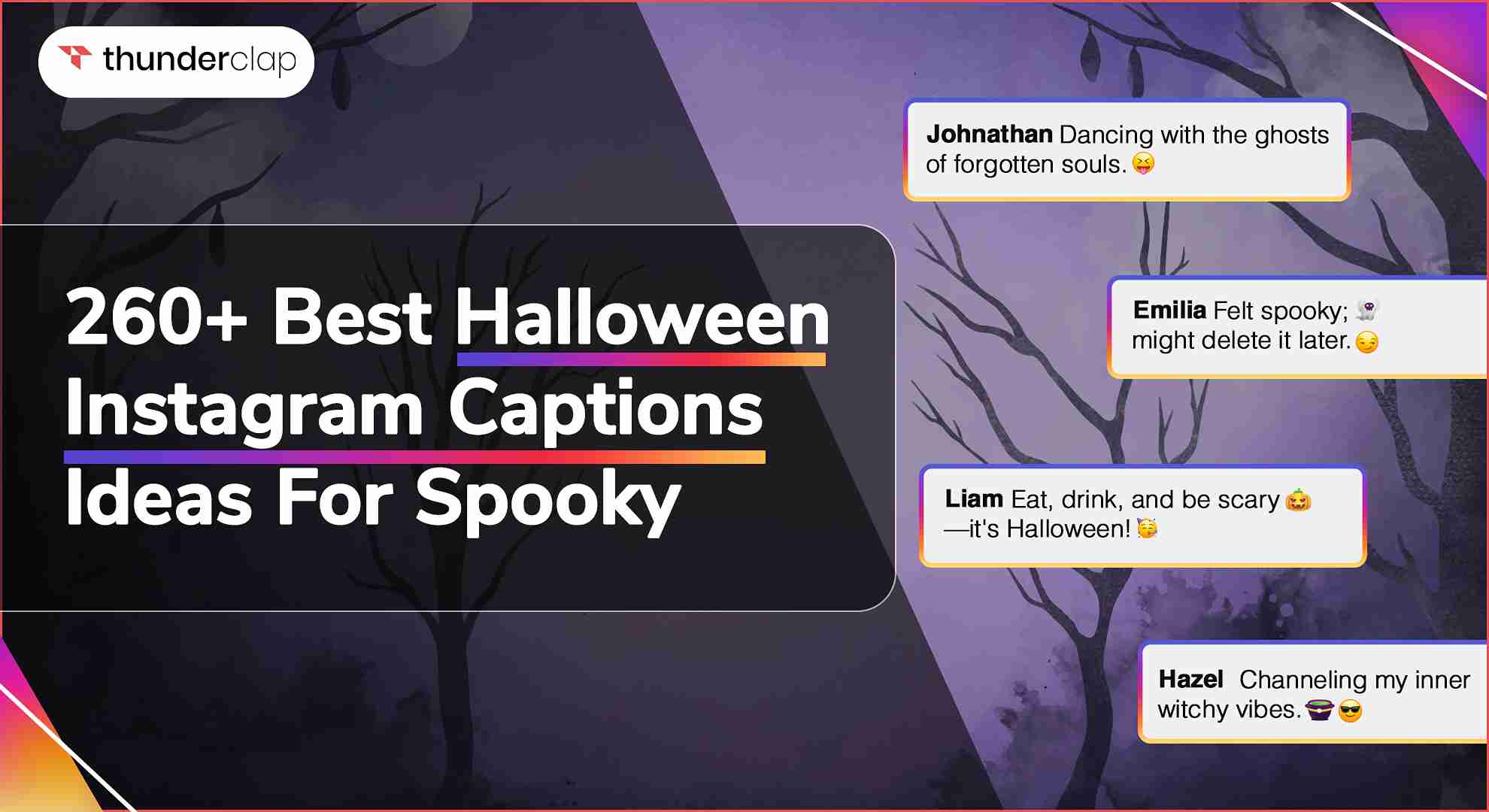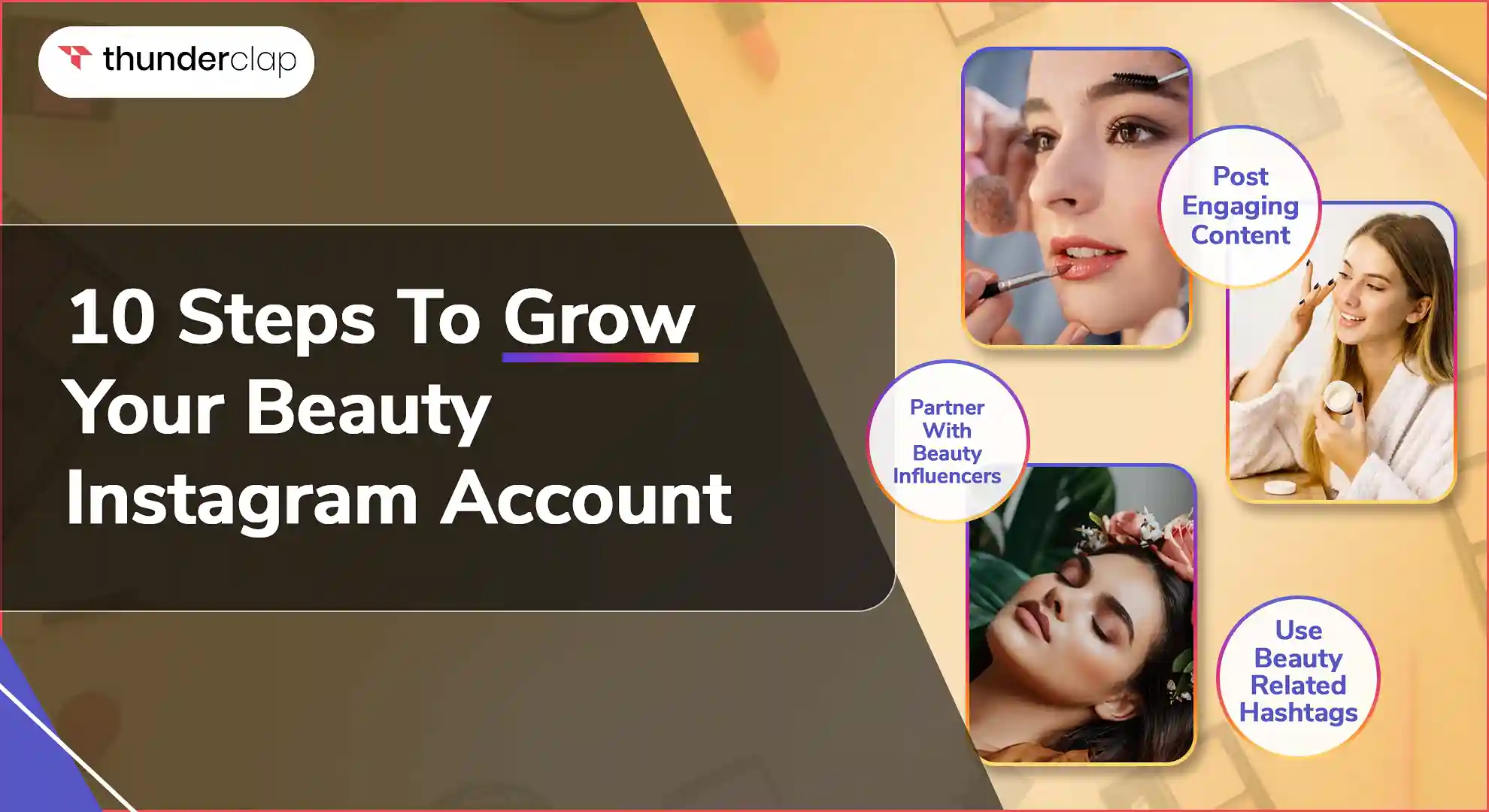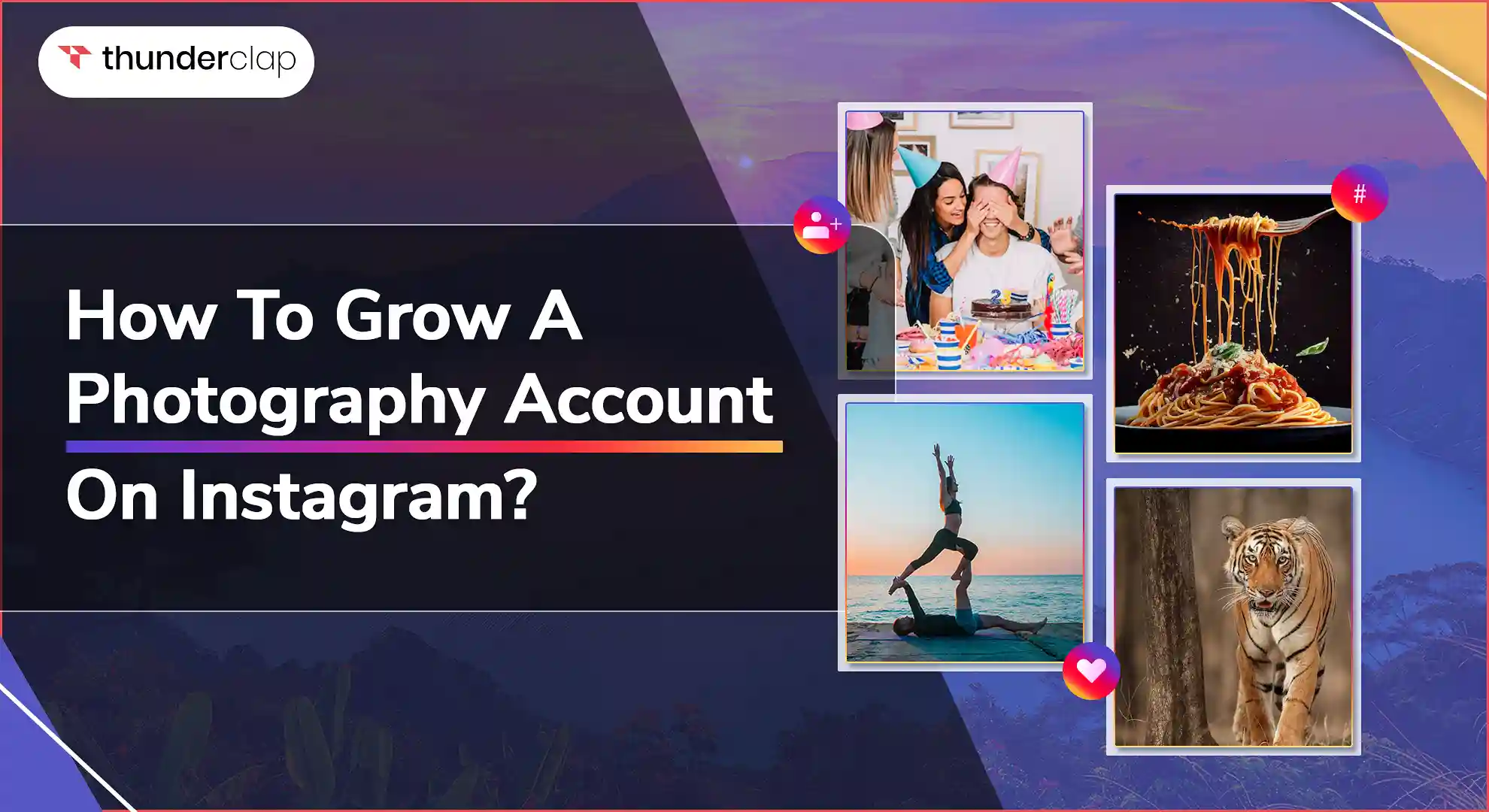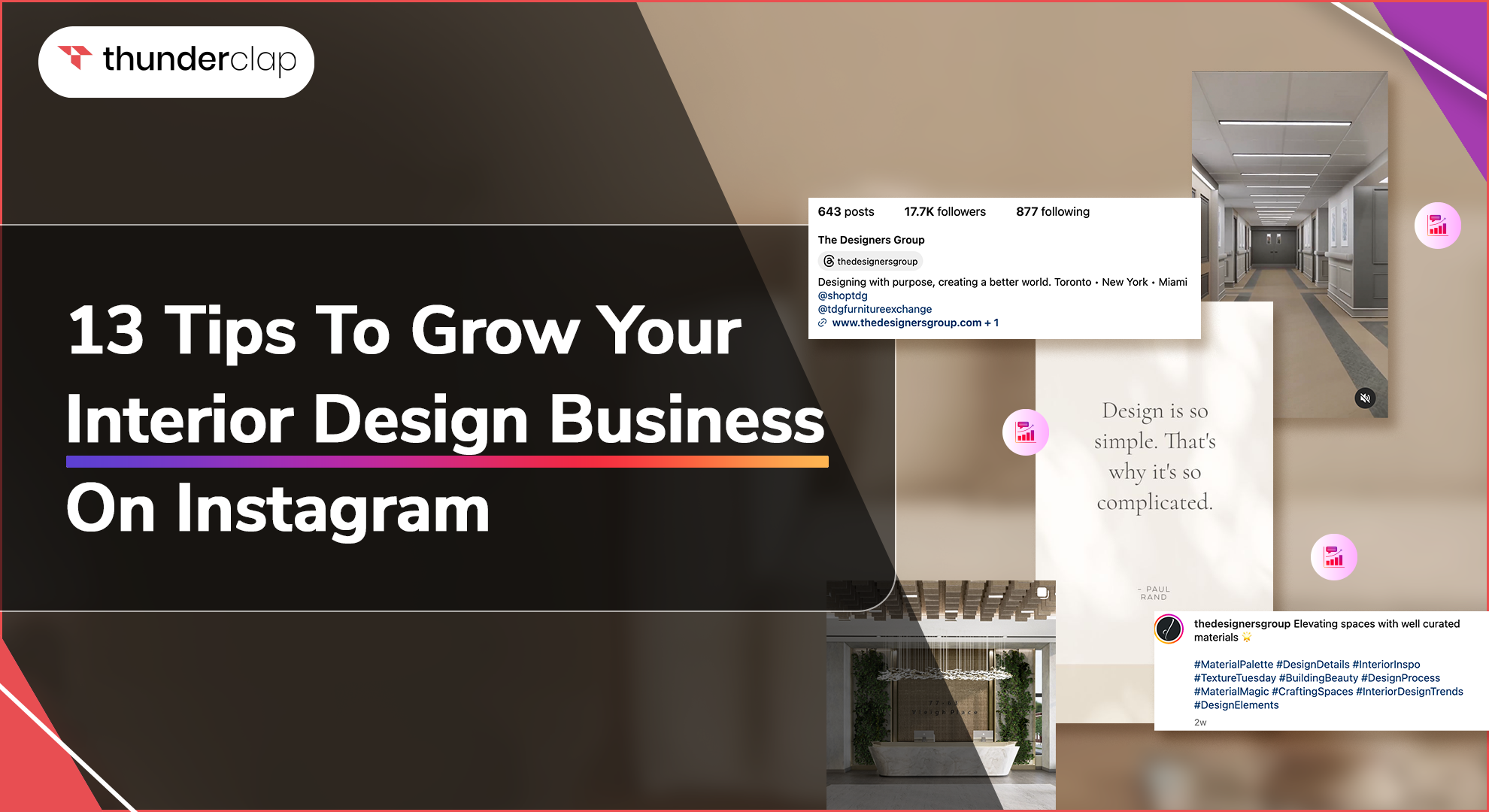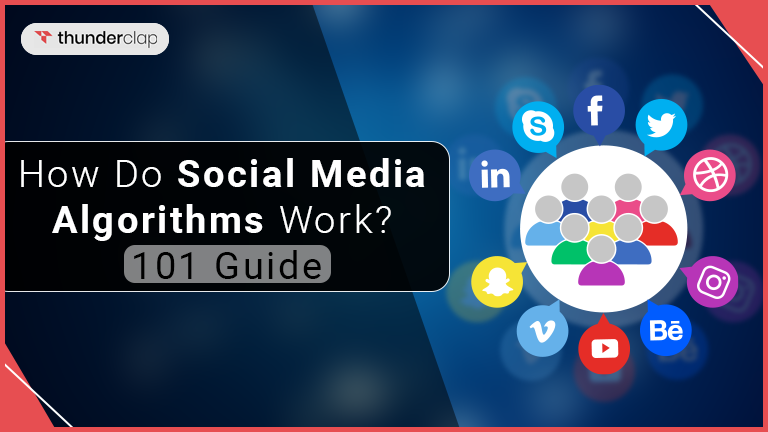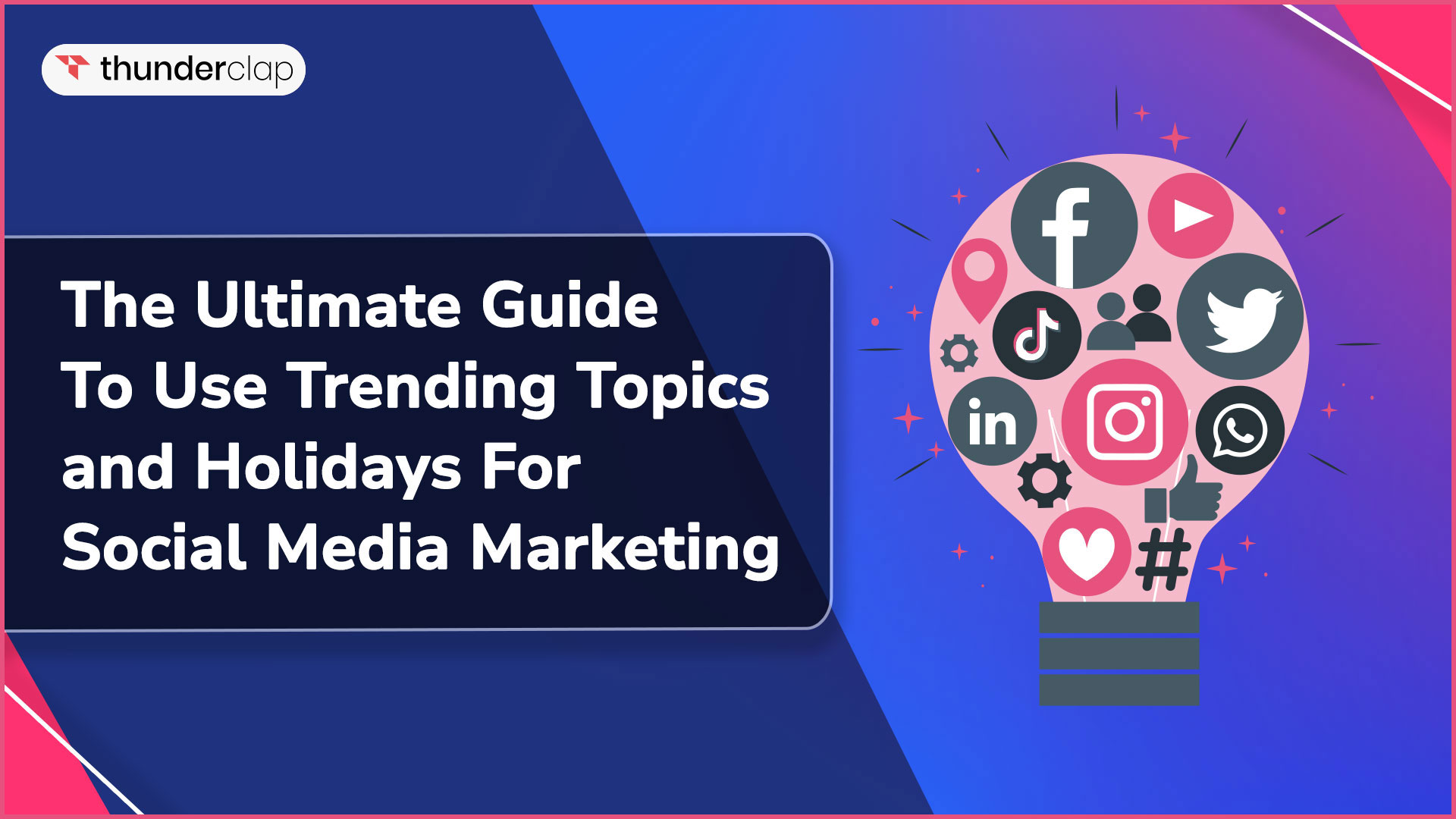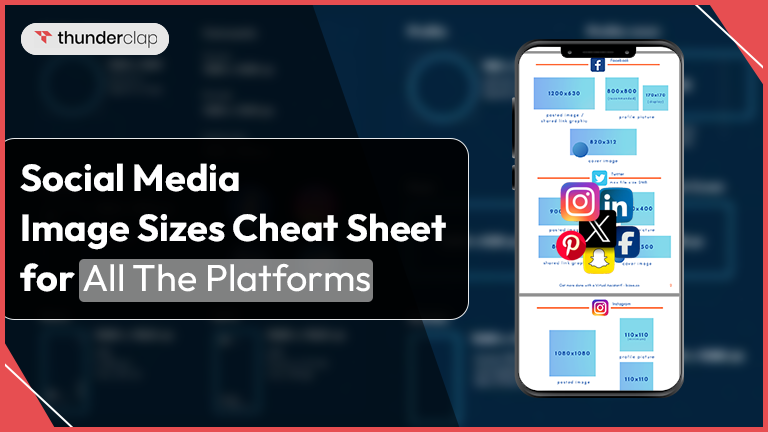The benchmark in digital marketing is nothing less than having a cheat sheet to social media success. An awareness of what's working for your industry peers will help you set the right goals, deliver content that engages with your target market, and eventually rise above your competition.
This blog highlights the latest social media benchmark data for 2024 including the platforms such as TikTok, FaceBook, Instagram, X (Formerly known as Twitter), and LinkedIn. This data also sheds light on key metrics across different industries, including Fashion, Financial Services, Food & Beverage, Health & Beauty, Home decor, Influencers, Media & Entertainment, Nonprofits, Software, and Education.
What is the Social Media Benchmark?
A social media benchmark is a performance-based metric that allows social media platforms to assess and compare the efficiency and effectiveness of various strategies. It is data points that measure how well your measures (following growth, engagement rate, impressions, reach, click-through rate, conversion rate, etc.) are performing and assist and guide you with further improvement tactics.
They can be seen as scorecards for your digital presence, calculating online posts and interactions, likes, comments, shares, etc., of your content.
Social Teams can compare your scorecards on the basis of three different types of social media benchmarks:
- Industry benchmarks: These benchmarks compare your social media performance to the average performance of other companies in your industry. This gives you a general idea of how you're stacking up against your competition in a broader sense.
- Competitive benchmarks: These benchmarks include engagement rate, follower growth, or the type of content your competition is posting. By analyzing your competitor's social media strategies, you can identify areas where you can improve your own approach.
- Personal benchmarks: These benchmarks track your own social media performance over a period of time. You can compare your current metrics, like follower count or engagement rate, to your past performance and the impact of your presence. This helps you see if your social media strategy is working.
These benchmarks will help you create an informed strategy and gain valuable insights to improve your social media performance.
In addition, social media benchmarks can be your roadmap to setting achievable goals. If you compare the follower growth for a local bakery to a global sports brand, it is fair to assume that their targets would be totally different.
Understanding what's typical within your industry allows you to set realistic milestones. This allows your social media strategy to celebrate real progress and avoid burnout by chasing unrealistic expectations.
Key Social Media Benchmarks And How To Measure Them
Here are some key Social Media benchmarks that describe and determine your presence on social media. Let’s have a look!
1. Engagement Rate
The Engagement rate measures the average number of interactions such as likes, comments, and shares received on your content by your user or audience. However, you must define your “audience” thoroughly.
Your engagement rate is measured relative to the number of followers you have on your social media account. However, all your followers may or may not engage with your content. So, how do you find your engagement rates?
Well, the answer is simple! To measure the engagement rate, divide the total number of engagements by your follower count and multiply by 100 to express it as a percentage.
2. Virality
Virality refers to how rapidly your content is shared across platforms. However, the virality rate calculates shares as a percentage of impressions rather than as a percentage of followers.
Keep in mind that each time someone shares your content, it impresses a new group of people through the audience of this person. Therefore, the virality rate is one of the most essential metrics that will tell you how your content spreads exponentially and its impact on your social media scorecard.
To calculate the virality rate, divide a post’s number of shares by its impressions. Multiply by 100 to get your virality rate as a percentage. A high virality rate suggests your content is resonating deeply with your audience. This can lead to significant brand awareness, increased website traffic, and a surge in new followers.
3. Reach
Reach is simply the users on social media platforms who see your content. It’s a monitor metric that shows your average reach on each post, story, or video.
The core advantage of this metric is to see what percentage of your reach is made up of followers vs. non-followers. This metric is readily available in your platform's analytics section.
A higher engagement rate signifies a more active, loyal, and interested audience. This can lead to increased brand awareness, improved customer loyalty, and ultimately drive better results for your social media efforts.
4. Impressions
Impressions signify the total number of times your content is displayed, regardless of whether it's clicked on or not. Impressions can be higher than reach because the same person might look at your content more than once.
An especially high level of impressions compared to reach means people are looking at a post multiple times. You can find this metric readily available in your platform's analytics dashboard to know how many impressions you get on your posts.
5. Follower's Growth Rate
The follower growth rate measures the total number of new users following your account or brand on social media across platforms within a given period of time.
To calculate your audience growth rate, track your net new followers (on each social media platform) over a time period. Then divide that number by your total audience (on each platform) and multiply by 100 to get your audience growth rate percentage.
A healthy follower growth rate tells you that your content is resonating and attracting new people. However, it's important to focus on the quality of the content and how it attracts engaged followers.
6. Click-through Rate
Click-through rate, or CTR, is basically a metric to measure how often people click a link in one of your posts to access additional content. That could be anything from a blog post to your online store. CTR gives you a sense of how many people truly interacted with your social content and wanted to know more.
To calculate CTR, divide the total number of clicks for a post by the total number of impressions. Multiply by 100 to get your CTR as a percentage. A high CTR suggests your content is driving traffic to your website. By analyzing which types of content have high CTRs, you can strategize your efforts for better results.
7. Conversion Rate
Conversion rate measures the percentage of users who take a desired action (like a purchase or email sign-up) after clicking on your link on your content. This is one of the most important social media marketing metrics because it shows the direct result of your social media strategy.
Conversion rate tracking often requires additional tools beyond native platform analytics. For instance, to identify which post or campaign drove customers to the website, you can add the Urchin Tracking Module (UTM) links to your product/website links on social media. UTM parameters can be used to keep social conversions trackable.
So, once you’ve added your UTMs, calculate the conversion rate by dividing the number of conversions by the number of clicks. A high conversion rate indicates your social media efforts are effectively influencing desired user actions.
3 Factors Affecting Social Media Benchmarks
Do you know what are the 3 factors that have an effect on your social media benchmarks? Here we have listed the 3 factors that have a deep impact on your social media account’s strategy and campaigns:
1. Types of Content
Social media allows you to create content in multiple types, such as reels, images, carousels, etc. However, this content can resonate differently with your audiences and will impact your social media benchmarks.
However, the impact will depend on which platform you use. For instance, Instagram and TikTok's algorithms favor information in video/reel format, while X (formerly Twitter) prefers images and text options. So, experiment with your content and track its performance to know what will work for your audience.
2. Time And Frequency Of Posting
More than what type of content you are posting on social media, the timing also plays a crucial role. Thus, you should know at what time and how many times you are uploading also affects your engagement rate.
Depending on your location and the audience’s location, you can decide the time of posting content. Also, you can post at the time you know you can gather more impressions on your social media accounts.
For instance, weekdays and mid-mornings might work for LinkedIn, while evenings and weekends are better for consumers on Instagram. In addition to that, how frequently you have been uploading your content also tells a lot about your social media strategy.
3. Platform Algorithm
Each platform has its own algorithm policies that are way too complex. Instagram and TikTok might favor content that is very engaging, quirky, and unique while X and LinkedIn often prioritizes content that sparks conversation and is considered as “unconventional.”
Algorithms prioritize content that aligns with a user's interests and past behavior and interaction. Hence, you can utilize relevant hashtags, target your content strategically, and tailor your content to the specific platform to ensure it reaches the right audience.
You must understand and then analyze these algorithms to help you optimize your content strategy for better reach and engagement.
Platform-Wise Social Media Benchmarks Analysis
Let's look into the key insights and overall benchmark data for some of the most popular social media platforms in 2024: Instagram, Facebook, TikTok, Twitter, and LinkedIn.
1. Instagram
Instagram remains a powerhouse for visual storytelling and brand engagement. Whether you want to post product photos, behind-the-scenes stories, or interactive content like polls and quizzes, it allows you to create an immersive brand experience to promote lasting connections with your user base.
- Average engagement rate: 0.73%
- Average follower growth rate: 0.5-1% monthly
- Average reach: 5-10% of your followers
- Click-through Rate (CTR): 0.5% to 1.5%
- Conversion Rate: 1% to 5%
- Posting Frequency: 1-2 posts per day
2. Facebook
With over 2.8 billion, the OG platform is still making a huge difference despite the presence of Instagram and TikTok. The usual key insight says long-form content and community building through Groups are preferred and get a boost via targeted ad placement.
- Average engagement rate: 0.15%
- Average follower growth rate: 0.5-1% monthly
- Average organic reach: Below 5% of your followers
- Click-through Rate (CTR): 0.5% to 2%
- Conversion Rate: 1% to 5%
- Posting Frequency: 1-2 posts per day
3. TikTok
The revolutionary application is still revolutionizing the way we consume our content. It has been a remarkable journey for educational channels on TikTok as they drove most of their content to virality.
- Average engagement rate: 2.65% (Highest across platforms)
- Average follower growth rate: 1.5% to 2% (Driven by viral content)
- Organic reach is generally high compared to other platforms.
- Posting Frequency: 2-4 posts per day
4. X (Formerly known as Twitter)
Twitter remains a hub for real-time conversations, news updates, and brand engagement. With over 400 million monthly active users, businesses can leverage Twitter to connect with their audience. What it often supports is: real-time updates, newsjacking, and audience interaction.
- Average engagement rate: 1.1%
- Average follower growth rate: 0.5% - 1% monthly
- Posting Frequency: 3-5 tweets per day
Organic reach can be lower compared to visual platforms like Instagram.
5. LinkedIn
LinkedIn is considered to be one of the ideal social media platforms for brand awareness, outreach programs and campaigns, and establishing yourself as an industry expert. You can utilize this platform by sharing valuable content on various things, participating in relevant groups, and connecting with potential partners and clients.
- Average engagement rate: 1.49%
- Average follower growth rate: 0.5% to 1% monthly
- Posting Frequency: 2-3 posts per week
Social Media Performance Analysis: Industry Benchmarks
Now that we've explored platform-specific insights let's delve into industry benchmarks to understand how different sectors leverage social media. This section provides a projected engagement rate range for Instagram, Facebook, and TikTok based on the latest industry data.
Fashion
In the fashion industry, TikTok and Instagram have been the most dominant platforms for brand engagement and promotion. With the help of the visually appealing content and influencer collaborations, fashion brands can drive high levels of engagement and follower growth.
The engagement rates across platforms are as follows:
- Instagram: 1.93%
- TikTok: 1.45%
- Facebook: 0.20%
- X (Twitter): 0.08%
Key takeaways: Invest in high-quality visuals showcasing your collections, utilize Instagram Reels, and explore TikTok to reach younger demographics.
Financial Services
Despite increasing post frequency, financial services brands fell short in creating quite an engagement stir. Financial services brands are mostly leveraging LinkedIn and TikTok to share thought leadership content, engage with customers, and drive conversions.
The engagement rates across platforms are as follows:
- Instagram: 0.44%
- TikTok: 2.43%
- Facebook: 0.20%
- X (Twitter): 0.02%
Key takeaways: Focus on educational content that addresses common financial concepts and concerns in the simplest terms. Leverage LinkedIn mostly to drive conversion rates by sharing industry insights and expert interviews.
Food And Beverage
The captivating visuals of mouthwatering recipes and exotic dishes have been helping many food brands skyrocket their engagement rates on Instagram and TikTok.
The engagement rates across platforms are as follows:
- Instagram: 1.4%
- TikTok: 3.95%
- Facebook: 0.40%
- X (Twitter): 0.30%
Key takeaways: Make use of Instagram and TikTok stories and extra features to showcase BTS of your recipe videos, make blogs related to cooking to be posted on Twitter.
Health and Beauty
It is no secret how Health and beauty brands have been strategically making use of TikTok and Instagram to share skincare tips, makeup tutorials, and product recommendations. Health and beauty brands have proven to be one of the most loyal audience bases as compared to other industries.
The engagement rates across platforms are as follows:
- Instagram: 1.17%
- TikTok: 1.38%
- Facebook: 0.24%
- X (Twitter): 0.11%
Key takeaways: Collaborate with beauty influencers and models who align with your brand values. Also, offer educational content like makeup tutorials and skincare tips and do as many GRWM glimpses as possible.
Home Décor
It is a new space for Home Décor brands, but it has created quite a stir with its visually stunning imagery and how-to videos. Home décor brands can drive high levels of engagement and website traffic if they use social media correctly and optimally.
The engagement rates across platforms are as follows:
- Instagram: 1.2%
- TikTok: 1.93%
- Facebook: 0.12%
- X (Twitter): 0.08%
Key takeaways: Run contests and giveaways to generate excitement and engagement by leveraging social media contest ideas for holidays to maximize participation and seasonal appeal. Utilize Industry-themed hashtags that have helped followers find Home Decor content.
Media & Entertainment
With the help of celebrity news, interactive features, controversy, and other kinds of entertainment-related news, Media outlets use social media to engage with audiences in real time and drive subscriptions. They are known to drive high levels of engagement and website traffic on TikTok.
The engagement rates across platforms are as follows:
- Instagram: 1.5%
- TikTok: 2.02%
- Facebook: 0.8%
- X (Twitter): 1.08%
Key takeaways: Collaborate with real-time celebrities, or people from the entertainment industry who align with your brand goals and values. Utilize hashtags about current events to remain top engagement earners for Media brands.
Non-Profit
Non-profit brands leverage social media to create and build a strong backing, loyal fanbase, and communities by sharing impactful stories and measures and raising funds. These NGOs posted more often than the median industry on most channels with the exception of TikTok.
The engagement rates across platforms are as follows:
- Instagram: 1.6%
- TikTok: 2.9%
- Facebook: 0.7%
- X (Twitter): 0.4%
Key takeaways: Utilize social media for fundraising campaigns, volunteer recruitment, and fostering a sense of belonging among supporters.
Software and Tech
Software and technology companies utilize social media platforms to boast and promote product features, share industry insights, and engage with customers in real-time about the changing and new technology.
The engagement rates across platforms are as follows:
- Instagram: 0.76%
- TikTok: 1.85%
- Facebook: 0.03%
- X (Twitter): 0.33%
Key takeaways: Explore and experiment with post types that go beyond the photos and carousel and utilize reels, live Q&A, etc., to boost engagement.
Education
The education industry is the only one that reigns supreme when it comes to social media engagement. Education brands use social media to connect with students, share educational resources, and promote courses and programs to increase enrolment.
The engagement rates across platforms are as follows:
- Instagram: 3.26%
- TikTok: 4.91%
- Facebook: 0.80%
- X (Twitter): 0.24%
Key takeaways: Utilize collaboration and duet features on TikTok and Instagram to interact with your audience.
Craft Winning Social Media Strategy Using Benchmarks
Yes, benchmarks and social media data are powerful, but how would you translate them into a successful and effective strategy? Here’s how:
Goals With Benchmarks
You must set specific, measurable, and practical goals for your social media presence while examining benchmarks. This will set a clear target and motivate you to optimize and prioritize your strategy.
Analyzing Your Competition
Identify your top competitors and compare their content formats, posting schedules, and engagement levels with each other and then with your strategy. See what they are doing differently and what’s working for them, and adapt elements that resonate with your target audience.
Utilize Analytics Tools
Several social media analytics tools help you track your performance against benchmarks in real time. These tools provide valuable insights into key metrics, including engagement rate, reach, follower growth, CTR, Conversion rate, etc.
Conclusion
The social media space is constantly evolving, and what has become more than a necessity is staying ahead of the curve via continuous analysis and adaptation.
By analyzing and understanding the factors that influence social media benchmarks and leveraging the industry analysis mentioned in this guide, you can design your well-updated social media marketing strategy aligned with your brand and target audience.
Thus, it is important to remember that social media benchmarks are a roadmap of the journey, not a destination. So, what are you waiting for? Start creating your social media benchmarks and prepare your scorecards to analyze your growth.
FAQs
1. What are social media benchmarks?
Social media benchmarks are metrics and reference points that are used to understand the performance of your social media. These benchmarks include engagement rates, follower growth, reach, impressions, conversion rates, etc..
2. How often should businesses monitor social media benchmarks?
It is highly recommended to keep checking and conducting a social media benchmark analysis every month. Regular monitoring allows brands to stay updated on industry trends and track performance metrics.
3. How to measure the ROI of social media efforts using benchmarking data?
Brands and businesses often use Benchmark data (social media data) to measure ROI using Key Performance Metrics including Conversion rates, CTR, customer value, customer acquisition cost, impressions, clicks, followers growth, and many such indicators.
4. How often should I update my social media strategy based on benchmarks?
Update your social media strategy based on benchmarks every month and conduct full research on your performance twice a year. But keep tabs on major trends, news, and changes in technical updates to increase the engagement rate.
5. What social media analytics tools can help me track my performance?
You can use the in-built insight tools that already exist inside the social media platforms you're using. Not just that, you can also utilize third-party software like such as Google Analytics, Mentionlytics, and many more.
